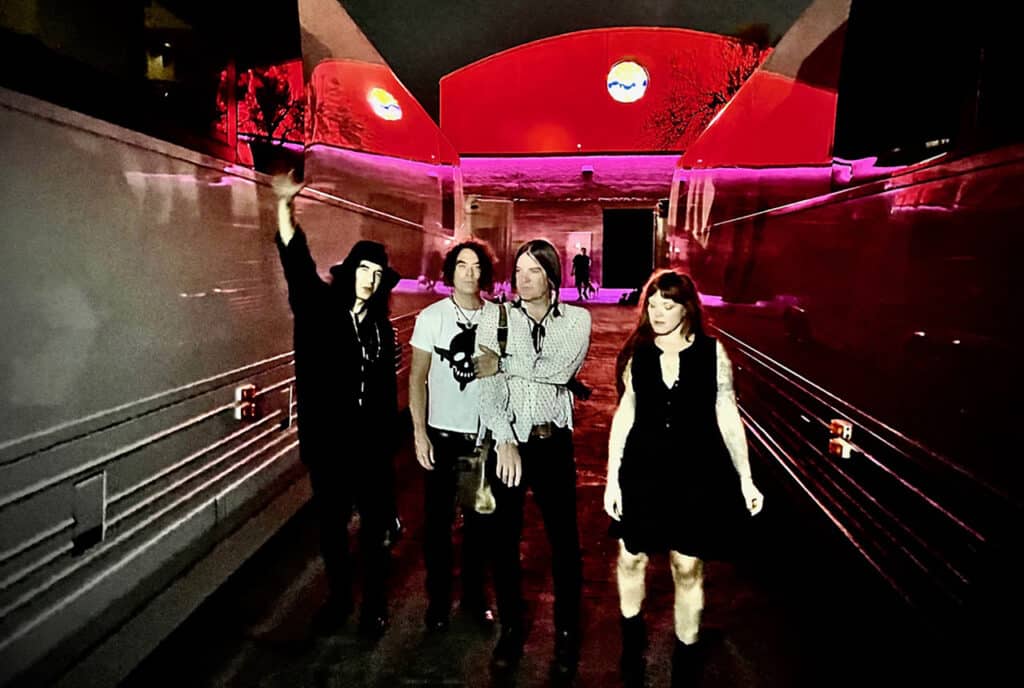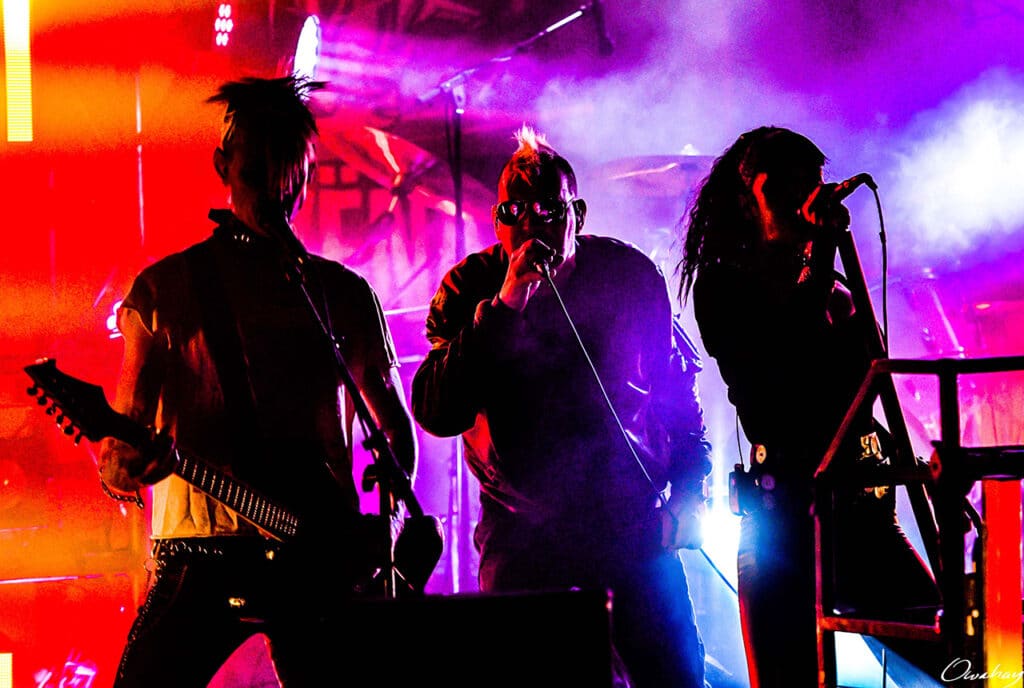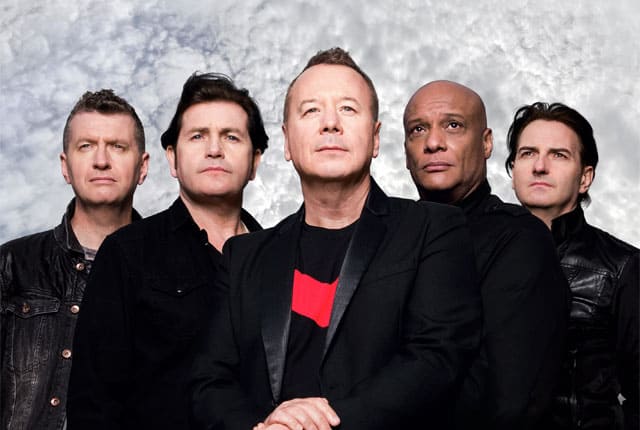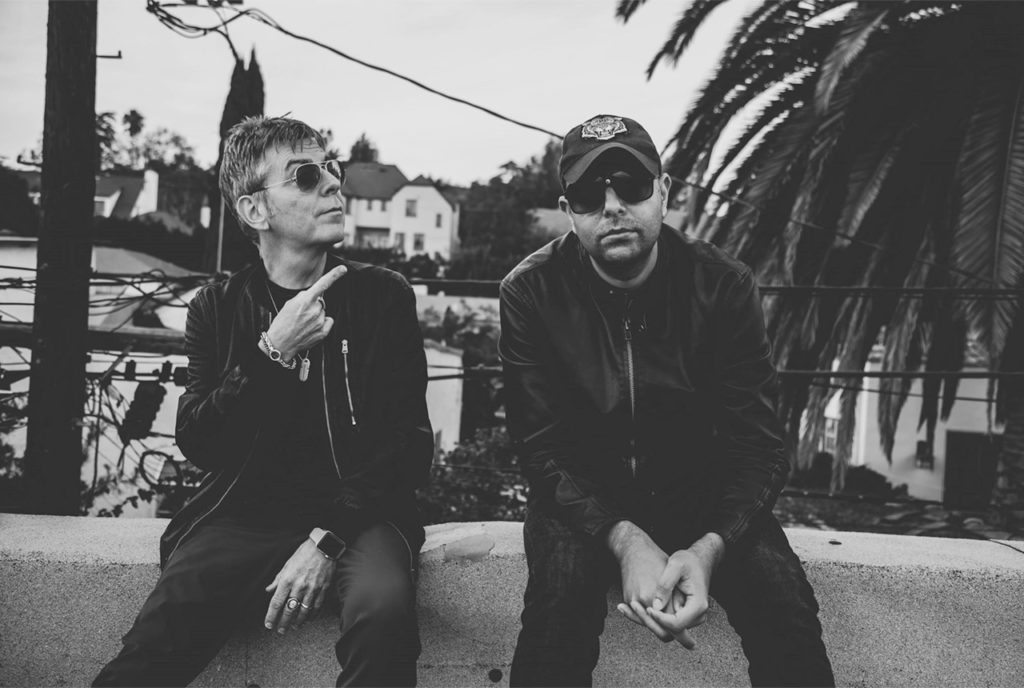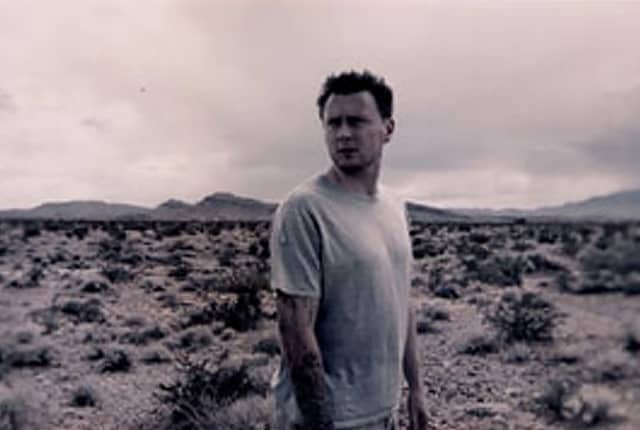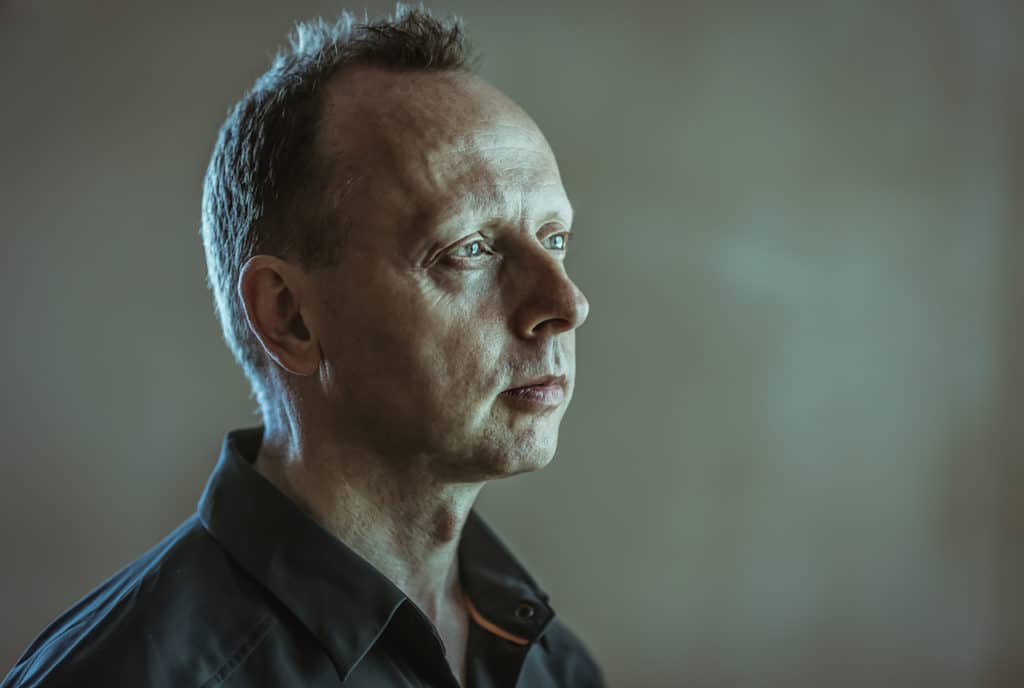“Guardrails” is the solo debut from Andrew Toy, a DC-based musician who has worked extensively as a session drummer/percussionist. The album evolved out of material he’s been playing live since 2016, where the use of looping and other effects enables Toy to re-imagine the role of drums and percussion. With the studio allowing even more room for experimentation, “Guardrails” is full of unique soundscapes driven by intricate rhythms with strong melodic elements woven in. In a phone interview, Toy discussed the making of the album.
Having been involved in many different projects, what made you put out your first solo album now?
Andrew Toy: I’ve been a drummer for a long time, kind of a session drummer, always playing in different bands. In 2016, I had a bit of downtime between gigs and started doing my own music. It was almost like a personal challenge to see if I could make music and play music live using just the drums and electronics. So it’s been a thing on the side for the past couple of years. But then, of course, this year, with no gigs and things like that, everything kind of fell apart. That actually opened up some time to really work on these ideas and flesh them out and record an album. So thanks to the pandemic, I had the chance this year to put it all together. I started recording it in March and mixing and producing and all that kind of stuff. That leads us up to today and the album release.
“Guardrails” has a very unique sound. What was your approach to making it?
Andrew Toy: It’s a whole kind of “studio as an instrument” kind of a mentality. I was able to work on sounds and sound design, things that might not be practical live. I got into more percussion and using electronics to get new sounds and things like that. So basically, I was trying to do things that I wouldn’t be able to do as much in a live show, really digging into sounds and production as well but also using the drums as kind of starting point, where all the sounds and where all the actual playing comes from. I’m a big proponent of everything coming from that more natural live playing starting point, even though things turn more electronic with a bit more obscured sound.
You mentioned starting to perform solo in 2016. Does this album represent material you’ve been performing live over the past few years?
Andrew Toy: I’ve done albums both ways with other people, where you either play songs a bunch live and then record them, or you make it in the studio and then when live, they kind of take on their own life. All these started from ideas that I had been playing out live in my solo show where I’m using looping and things like that. So that was kind the starting point. But now, since they’ve evolved so much, I’m going to have to reverse engineer them to be able to play them live. There’s always that challenge playing stuff like this live. I don’t want to just come out with a bunch of samples and a laptop and say, “Here’s the show.” So I need to find ways to actually make more stuff responsive and on the spot. So live, it’s going to end up being very different. There’s going to be a lot of things from the album that I don’t do live. And a lot of things that I do live that maybe aren’t on the album. I’m not planning on making the live show and the album an identical thing. They’re going to be kind of like two halves of the greater part. That’s the way I kind of approach it.
Given that approach, did any of the tracks end up becoming particularly different from their original live incarnations?
Andrew Toy: All of them actually, but especially I would say the second single I released. It’s called “Sneaking Suspicions.” That started out live as just a piece built on drum sets and kalimba, but of course, in the studio version, there’s a big influence of having the vibraphone. A lot of the sounds on that track come from the vibraphone, which is not something I ever intend to really bring out live. So just introducing some new sounds kind of like pushed it in a couple of different directions. That’s one that turned into more of this like kind of epic sort of piece.
In developing your approach to solo music, did any other artist influence you?
Andrew Toy: There’s all the general influences of mine, things I’ve listened to all my life, like Brian Eno and David Byrne and David Bowie and folks like that. But as far as more specific sort of things, there are a few people. There’s this one Dutch guy who goes by Binkbeats. He does a similar thing, a little bit more in a hip hop sort of realm. But he’s a percussionist and uses all these things live in really innovative way, like looping and automation sort of techniques. So that was really inspiring, just studying what this guy does and using the electronics the way that maybe a guitarist would, running it through different processing and things like that, but it’s all live, it’s all real-time.
So just as far as the technical side of it, Binkbeats was a big influence on what I do. Another one that’s been an influence for a while is Glenn Kotche from Wilco. For a while now, he’s done a solo drum show. Even just the idea of having a solo drum show, without it being some wanky drum solo kind of thing, was really inspiring. I was the first time I heard of treating the drum set like a little ensemble, with different voices and you’re using different sounds than you might typically hear on a drum set.
Was it a challenge establishing a working process?
Andrew Toy: There is no clear-cut sort of thing, which is kind of like the challenge and what makes it exciting, and maybe it’s what makes it occasionally frustrating. There are not a whole lot of people doing it exactly like this. That’s where I think things can get exciting if they’re not too scary. You’re not quite sure where the guardrail is, so to speak. It’s a constantly evolving sort of thing. I try not to get too caught up in the tools of it, with gear and stuff like that. But when I started incorporating automation using Ableton live, it opened up a lot of doors where I could start to do more than one thing at the same time. I just have a little bit of a script to go on, but I’m still playing everything live. So that’s the actual sounds and instruments. I don’t get too crazy about that. I’m basically just a small drum set and a couple of pieces here and there. But in the studio, I’m trying to use basically anything I can get my hands on that I can coax a good sound out of.
With the real-time effects on the drums and stuff like that, I’m not the first person to do it, but it’s only been in the past 5 or 10 years that it’s really come along enough from a technological standpoint—taking the entire drum set and running it through effects and loopers in real-time and stuff like that. There’s even still a little bit of latency. There are all these technical issues, but I think that’s cool. It’s just being inspired by whatever technology you have at your disposal. Whatever situation you find yourself in, even if it’s 2020, which was not a great situation. It’s going to force some new avenues that haven’t been explored yet.
Have any of your other projects influenced your solo work?
Andrew Toy: Most of the stuff that I’ve done with other people, touring and making albums, has been pretty straight ahead compared to the solo album. But one of the cool things about music is anything you do is going to influence everything else, even in maybe subconscious ways. For instance, I do a lot more world music type stuff, and more traditional music that is at the opposite end of the spectrum from this stuff. But just playing different percussion instruments and listening to different world music, it might not immediately seem like a big influence here, but it might have a good impact on it.
Do you have a general creative process in terms of starting points for songs?
Andrew Toy: It varies, but a lot of times, I start with either a mental picture or maybe just a sound . Once you start improvising with it and playing within these themes, that’s when it starts to take on a life of its own. It doesn’t sound like you’re trying to copy anything. For instance, on the track “Nusa,” I used an Indonesian instrument that I picked up in Bali a few years ago. Just having that sound palette there, and just listening to like gamelan music and stuff like that. In no way does the track sound like that, because that’s a completely different thing on its own.
But trying to capture that sort of vibe with whatever limited sort of tools I have might be a starting point there. Or, just having a scene in mind. That’s one thing that a few people have told me, that they hear all these cinematic sort of things in my music. I think that is great to hear, that’s a good compliment. Maybe just like picturing a scene like in a movie or a vibe. Especially like the first track on the album, “In the Clearing,” I feel like that could be a scene in a movie where somebody is in this clearing and there are all these dangers lurking around, or something like that. So sometimes, having a mental picture that’s not even remotely musical can be kind of cool and inspiring.
I know you said that you don’t dwell on the tools, but are there any tools that you’d like to see emerge, perhaps to address a current limitation?
Andrew Toy: I hadn’t thought of that. I do like to play with other people. I’m working on a project with a bassist right now I’m excited about. There’s no replacement for other people. I don’t want it to sound conceited, like, “I don’t need anybody, I can do everything myself with my computer.” There is always going to be value in playing with other people. But what would I like to see? I don’t even know. That’s a darn good question. I’m going to just focus on whatever is available and not try to dream too much.
For more info, visit : andrewtoy.net.



